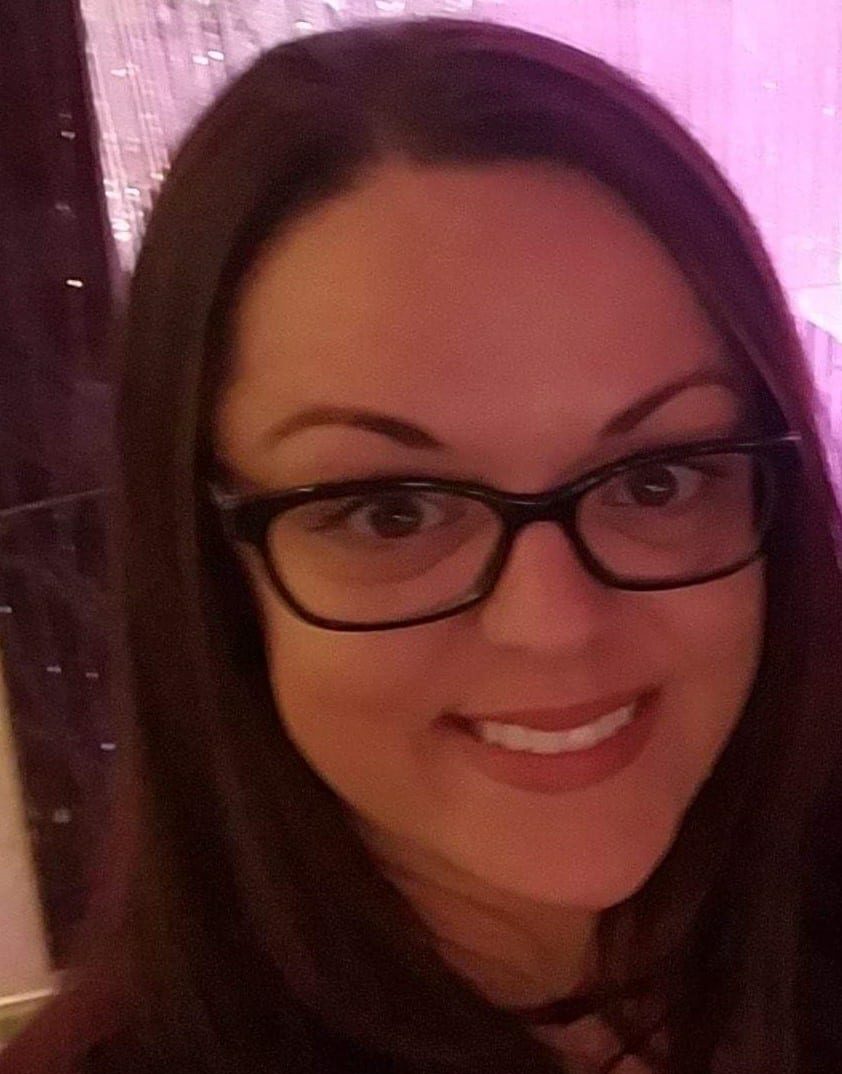As an operations support specialist for a busy dental practice with 15 clinics in the Richmond, Virginia area, Sandrea Painter has always been go-go-go. That is why the headaches, vision loss, and fatigue, which caused her to struggle at work and in her day-to-day activities following brain surgery in July 2019, proved so frustrating.
But a chance finding of a podcast on traumatic brain injury turned out to be what Sandrea would later call “life-changing.” The podcast, found in early 2020, included an interview from Mind-Eye Institute founder Deborah Zelinsky, OD.
“I researched Mind-Eye because I wanted to know all the details. It blew my mind watching the various patient testimonial videos on the Institute’s web site. Then I made an appointment,” Sandrea says.
After extensive testing during her first Mind-Eye visit, Sandrea learned “how badly my eyes were out of alignment due to the trauma to my brain.”
“On my eye tracking test, I scored only 11 of a possible 100 points,” says Sandrea, who was then prescribed a pair of Mind-Eye “brain” glasses that effectively began reducing her symptoms and helping resynchronize her eyes. At a follow-up Mind-Eye appointment several months later, Sandrea quadrupled her testing results, scoring 45 out of 100.”
The Mind-Eye Institute is known worldwide for its work in bringing symptom relief to brain-injured patients by stimulating, modifying, and regulating patients’ visual processing. “Visual processing” refers to the brain’s almost instantaneous ability, consciously and subconsciously, to take in external sensory signals (from eyesight, hearing, smell, taste and touch), combine them with a person’s internal sensory signals (such as head position and muscle tension), and process the information, allowing a person to react and respond to his or her environment.
When functioning normally, visual processing enables people to understand and interact appropriately to the world around them, explains Dr. Zelinsky. “If brain circuitry is disrupted due to injury or neurological disorders, such as anxiety, sensory systems are heightened, often creating confusion about the surrounding environment. Confused people will often exhibit inappropriate reactions and responses to movement, sounds, and light.”
The Mind-Eye Institute helps develop – or re-establish – patients’ visual processing capabilities by using therapeutic eyeglasses and other advanced mind-eye techniques. “Brain” glasses bend light in different ways across the retina, which is composed of brain tissue and is part of the central nervous system.
“’Brain’ glasses are not about achieving 20/20 clarity,” Dr. Zelinsky says. “They are designed to improve patient comfort by rewiring dysfunctions in peripheral retina signals. The intent is to resynchronize brain circuitry between motor and sensory systems in order to improve a patient’s overall visual processing. The motor and sensory circuitries are meshed with other systems due to interactions of the retina directly with brainstem and limbic functions.”
Little did Sandrea know how “off” her visual processing was until she returned to work 29 days following her craniotomy for removal of a cyst.
“Initially, I was excited,” Sandrea says. “I am a hustle-bustle person, but I soon began experiencing serious fatigue issues. I was like a battery that would get quickly drained from the mental exertion of my job. The energy would literally be sucked out of me. I would work as long as possible until I couldn’t any more. And my vision problems were affecting my ability to read. As part of my job, I have to review many accounts and spreadsheets, and that was becoming increasingly difficult to do.”
Sandrea went to physicians and retinal and low-vision specialists seeking symptom relief, but no one seemed able to resolve her vision and fatigue problems.
That is when she turned to the Mind-Eye Institute.
Of all the various patient assessments used at the Mind-Eye Institute, most amazing to Sandrea is the Institute’s patented Z-Bell Test℠, a simple, but revolutionary, method of checking a patient’s overall integration of retinal processing with awareness of auditory space — basically, how stable the eye-ear connection is.
During the Z-Bell Test℠, a patient reaches out, with eyes closed, and tries touching a ringing bell. If the patient cannot do so, a Mind-Eye optometrist places different lenses, prisms, and filters across the patient’s closed eyelids until an optimal combination allows the patient to find the bell immediately without conscious effort. Light still passes through the eyelids and activates parts of the brain not used for eyesight. With eyes closed, patients are still having to visualize surrounding space in order to locate the bell.
“At my initial appointment, I kept missing the bell, missing the bell, and then the optometrist would put a lens or filter across my [closed] eyes and suddenly, bam, I am hitting the bell. Just incredible.”
Sandrea’s advice to other patients who suffer brain-related symptoms similar to hers: “Become your own advocate. After all, medicine is not an exact science. More patients need to know about the kinds of testing and treatment that the Mind-Eye Institute and optometrists like Dr. Zelinsky and Dr. (Carla) Adams provide.”
Sandrea also relates how she has had to overcome symptoms of anxiety, which she developed as a teen, and attention deficit disorder – a diagnosis she did not get until an adult. “I was taking many prescribed medications on and off for much of my life,” she says. “But health care need not be about getting pumped full of drugs. There are much better options.
“Dr. Zelinsky and her team have taken optometry to a whole new level,” she adds.

Success Stories, Traumatic Brain Injury
Fatigue, Vision Problems Slow Her ‘Hustle-Bustle’
Patient Turns to Mind-Eye for Symptom Relief Following Brain Surgery
